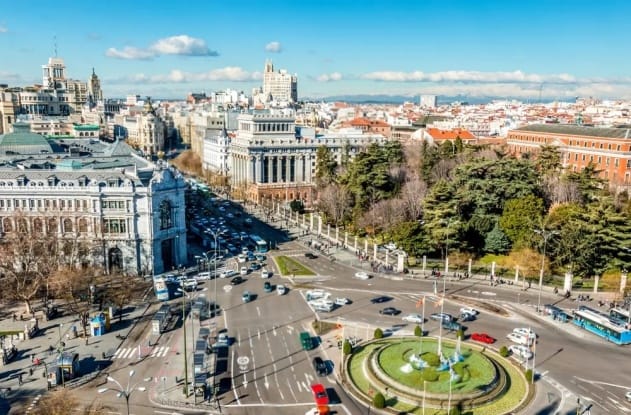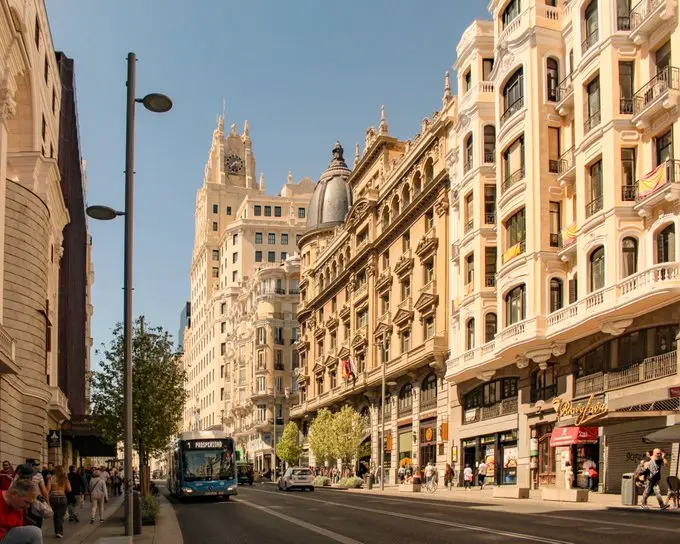Madrid: Europe’s Fourth-Largest City Deserves More Recognition
When people think of Europe's great capitals, cities like London, Paris, and Rome immediately come to mind. Berlin, with its modern resurgence, also commands attention. Yet Madrid—Spain’s vibrant, historic, and rapidly evolving capital—often remains underrated. This is changing. As global dynamics shift in 2025, Madrid is asserting itself as a cultural, economic, and political force in Europe and beyond.
Luke Stegemann’s book Madrid explores why the city deserves a place alongside Europe’s most celebrated capitals. While it is not the first English-language book about Madrid, it stands out as one of the most comprehensive, offering a fresh perspective on a city that has long been underappreciated.

Madrid’s Unique Origins and Royal Ascendancy
Unlike other European capitals with deep medieval or classical roots, Madrid only became Spain’s capital in 1561 when King Felipe II made the unexpected decision to move the royal court there. His reasons remain debated—some suggest its central location was strategic, while others argue that it offered the monarchy a level of control unchallenged by powerful regional elites, unlike nearby Toledo.
Madrid is also distinctive in its origins. It is the only European capital founded by Muslim rulers, with its earliest incarnation as Mayrit, a 10th-century fortress built by the Moors. Though it started as a modest settlement, it would later transform into the center of an empire that spanned continents.
Despite its history, critics have often dismissed Madrid as merely a political hub that extracts more from Spain than it contributes. Stegemann challenges this notion, illustrating how the city was not only the administrative heart of Spain’s global empire but also a magnet for cultural and intellectual brilliance.
The Cultural Powerhouse of the Spanish Golden Age
Madrid reached its artistic peak during the Siglo de Oro (Golden Age), a period of extraordinary cultural production between the 16th and 18th centuries. The city became home to figures like Diego Velázquez, whose masterful paintings shaped European art, and Miguel de Cervantes, whose Don Quixote became one of the most influential literary works in history. The theater scene flourished under Félix Lope de Vega, solidifying Madrid’s status as a creative hub.
Even as Spain’s political power waned in later centuries, the capital remained a draw for artists, most notably Francisco Goya, who captured both the grandeur and turmoil of Spanish society in his paintings. Today, Madrid’s Prado Museum houses a remarkable collection that includes works by Velázquez, Goya, Bosch, Rubens, and Titian—a testament to its enduring influence on European art.

A Modern Metropolis on the Rise
While Stegemann’s book provides a rich historical account, Madrid’s modern-day significance is equally compelling. By 2025, the city has positioned itself as an economic powerhouse, attracting investment, innovation, and an influx of migrants. It is one of the fastest-growing financial hubs in Europe, rivaling traditional centers like Frankfurt and Milan. Its expanding tech industry, bolstered by a skilled workforce and government incentives, has made it a key player in the global economy.
Madrid is also at the heart of the Spanish-speaking world, serving as a cultural and economic bridge between Europe and Latin America. The city has become a magnet for Latin American entrepreneurs, artists, and intellectuals, reinforcing its role as the de facto capital of the Hispanic world. Its internationalization is evident in everything from its culinary scene to its corporate landscape, where businesses from Mexico, Argentina, and Colombia establish European headquarters.
A City That Deserves More Appreciation
Tourism in Madrid has surged in recent years, with visitors drawn to its museums, lively plazas, and thriving nightlife. Yet, its appeal goes beyond aesthetics. Madrid offers an energy and authenticity that differentiates it from its more tourist-heavy counterparts like Barcelona or Paris. It is a city that seamlessly blends history with modernity—where grand royal palaces stand alongside cutting-edge architecture, and traditional tapas bars coexist with Michelin-starred restaurants.
For too long, Madrid has been overshadowed by other European capitals, but that is changing. As the world looks to new centers of influence, the Spanish capital is finally getting the recognition it deserves. Whether as a cultural beacon, an economic powerhouse, or a bridge between continents, Madrid is no longer just Spain’s political heart—it is a city shaping the future of Europe.





